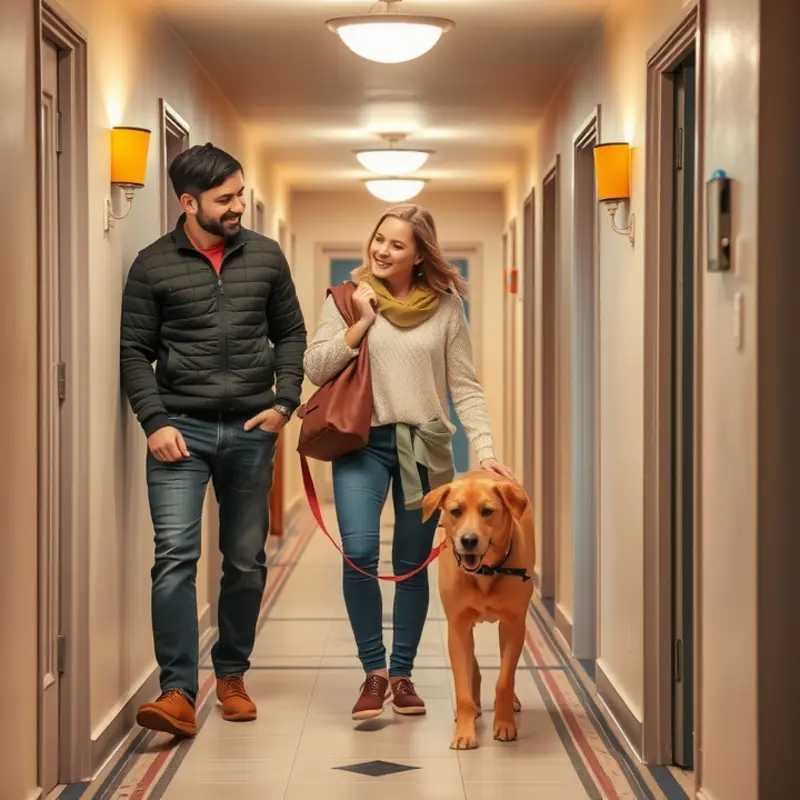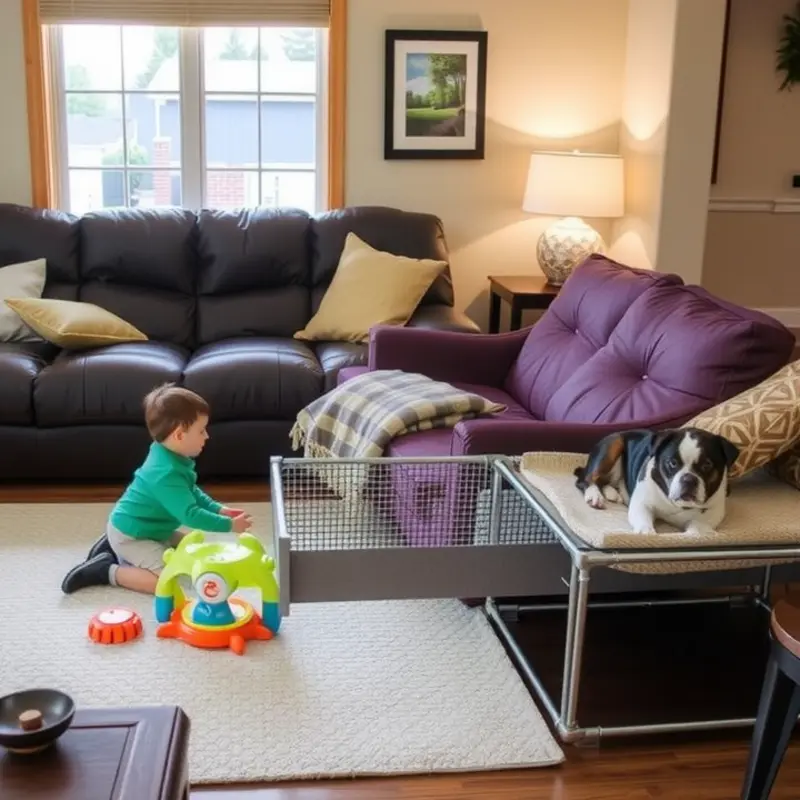Finding an apartment that caters to both pets and children can be a rewarding yet challenging endeavor. Families, couples, and renters alike face the hurdles of ensuring that their living environment accommodates their furry companions’ needs while still being safe and comfortable for children. Embracing good pet etiquette not only nurtures a peaceful home but also fosters lasting relationships with neighbors and landlords. As responsible pet owners, it is essential to understand the nuances of sharing spaces, ensuring cleanliness, and respecting communal areas. With insights tailored to diverse living situations, this guide aims to provide practical tips for maintaining harmony and comfort in your apartment, benefiting both your pets and loved ones. Let’s explore the foundational principles of apartment pet etiquette, showcasing the essential steps for fostering a pet-friendly and child-safe environment.
Understanding Pet-Neighbor Dynamics

Living in close quarters with pets requires not only caring for your furry friend but also fostering positive relationships with neighbors. Communication is key. When you move into a new apartment, introduce yourself and your pet to your neighbors. Let them know about any traits your pet may have, such as barking or scratching. This proactive approach can ease any concerns and establish an open line for future conversations.
Respecting noise levels is equally important. Even the most well-behaved pets can have moments when they are noisy. Training your pet to reduce unnecessary noise and ensuring they get ample exercise can mitigate disturbances. Consider walking your dog during quieter hours or keeping playtime to appropriate times of the day. If your pet is particularly vocal, work on behavior correction methods or consult a professional to address these issues.
Apartments often have specific guidelines regarding pet ownership. Familiarize yourself with these rules, as they are designed to ensure a harmonious environment for all residents. Rules may cover the acceptable number of pets per unit, leash requirements, or designated pet relief areas. Adhering to these guidelines demonstrates respect for the community and minimizes conflict. Additionally, it’s worth checking out rental laws by state to ensure you understand your rights and responsibilities as a pet owner.
Maintaining cleanliness is another pillar of pet-neighbor dynamics. Cleaning common areas after your pet uses them and managing pet odors within your apartment contributes to maintaining a pleasant environment for everyone. Odor-neutralizing sprays and regular grooming help keep your apartment fresh.
If issues arise, approach them calmly and constructively. Should your neighbor have concerns about your pet, listen to their perspective and work together to find a compromise. Being approachable and showing empathy can defuse tension and foster understanding.
By prioritizing communication, adhering to apartment policies, and being mindful of your pet’s impact, you can cultivate a positive relationship with your neighbors while ensuring a comfortable living situation for your pet. These efforts contribute to an enjoyable and harmonious apartment living experience.
Creating a Pet-Friendly and Child-Safe Space

The key to successfully integrating pets into family life while ensuring children’s safety lies in creating distinct areas for both to enjoy. Setting up a harmonious apartment requires thoughtful planning and the use of practical measures to safeguard both your children and pets.
Designating Pet-Free Zones
Establishing areas where pets are not allowed can go a long way in maintaining peace and safety at home. Many families choose to keep bedrooms, kitchens, or children’s playrooms off-limits to pets. This not only ensures a clean space free of pet hair but also limits the potential for accidents or disruptions. To implement this effectively, consider using childproof gates that can be easily installed without damaging rental walls.
Utilize Appropriate Barriers
Barriers come in handy to demarcate pet zones and are essential in pet-proofing your living space. Opt for gates that are sturdy and have a secure locking mechanism. Look for features that allow easy access for adults but are impossible for pets or toddlers to open. Adjustable gates that fit different doorway widths offer flexibility, especially when you need to change your apartment layout.
Secure Hazardous Items
Some household items can pose risks to both children and pets. For example, cleaning supplies, electrical cords, and small objects that can become choking hazards should be stored securely. Childproof latches for cabinets and furniture anchors will help keep dangers out of reach. For electrical cords, reels or covers can keep them organized and diminished as a tempting chew toy.
Create a Dedicated Pet Area
Each pet should have a dedicated space in your apartment to call their own. Equip this area with your pet’s bed, toys, and food to create a cozy nook. This also teaches your pet to retreat here when they need downtime. Make sure this space is accessible but not in a high-traffic area to further prevent accidents.
Invest in Durable and Safe Flooring
Flooring takes the brunt of both children’s playtime and pets’ activities. Choose materials that are both durable and easy to clean. Rugs with non-slip underlays can protect floors and provide a clean, soft area for playtime for both children and pets. For more ideas about flooring solutions, read this guide on pet-friendly flooring.
Supervision and Training
Never underestimate the power of supervision and proper training in creating a safe environment. Pets should be trained to understand boundaries, and young children need supervision to learn respect for animals. Teaching children and pets to interact safely under supervision can prevent many mishaps.
These measures ensure that your apartment remains a safe haven for your family. Creating a pet-friendly and child-safe space fosters an environment where every family member, human or not, can thrive.
Final words
Fostering a nurturing environment for both pets and children in an apartment setting requires mindfulness and respect for those around you. By understanding the importance of neighbor relations and taking proactive steps to child-proof and pet-proof your living space, you can create a home where everyone feels safe and comfortable. It’s about balancing the joy of having pets with the needs of residents in the shared community. Whether you’re a seasoned pet owner or new to apartment life, applying these simple rules fosters harmony and enhances your living experience. Embrace the joy of cohabitation, nurturing your pets while ensuring a pleasant environment for all.









